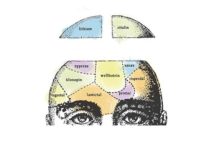A recent study, published in Qualitative Health Research, examines the impact of antidepressants on selfhood during a significant period for identity development in women. The authors, based in New Zealand and the UK, identified self-related themes drawn from the participants shared narratives, including a “diagnosed self,” an “ill self,” a “normal self,” a “stigmatized self,” an “uncertain self,” and a “powerless self.”
“Youth is a period of life within which identity issues are paramount and people begin to explore narrative possibilities that will contribute to their future selfhood. Although antidepressants offer young women legitimacy for their distress and the possibility of ‘normal’ functioning, they also represent a significant challenge to selfhood at a time when it is just beginning to take shape,” the authors, Wills, Gibson, Cartwright, and Read, write.

While there has been a significant increase in the use of antidepressants in developed countries over the past few decades, its usefulness in treating depression is still highly debated in the literature. Even as antidepressant use in New Zealand is reported to have increased 21% between 2008 and 2015, and women make up the majority of who are prescribed this medication, little attention is paid to the influence of antidepressants on young women’s sense of self.
“Besides the direct impact of these medications on depressive symptoms, antidepressants also have profound consequences for a sense of self as they are designed specifically to alter people’s emotional experience of themselves and the world,” write the authors.
They describe the idea of selfhood as “the way that individuals make sense of their own identities through narratives,” including stories they tell about themselves as they are shaped and constrained by their culture. Will and colleagues go on to identify risks of antidepressants in relation to selfhood, particularly in young women who are inundated with cultural expectations of how they “should” be.
This article aims to expand the research on antidepressants and selfhood by including narratives of young women who have taken antidepressants during a crucial age of selfhood development. The authors address the question, “How do antidepressants shape selfhood in young women?”
Sixteen participants were identified between 18-25 years, of whom had taken antidepressants for at least six months and as long as eight years. The interviews were grounded in a narrative approach, in which identity emerges as a product of story-telling. They asked participants to share their stories of using antidepressants in their own words.
Using thematic analysis, and focusing on representations of selfhood in relation to antidepressants, Wills and colleagues identified six common themes.
A diagnosed self: Participants described understanding their distress as a “problem with a label” that was able to reify their suffering for themselves and others, whereas before it felt unheard. Having a diagnosis led some to identify with negative characteristics, using phrases like “a failure,” “defeated,” and “damaged.”
An ill self: Participants described themselves during periods of distress as sick and unwell, bringing about feelings of legitimacy where before they felt they were not taken seriously. This theme was also reflected when participants described feeling helpless and reliant on medication.
A normal self: Participants expressed being able to feel “normal” on medications, both with themselves and socially with others. Others articulated the effect of normalcy disconnecting them from their authentic selves, due to feeling numb, flat, or strange. Some found a more functionally normal self, therefore sacrificing a more idiosyncratic self.
A stigmatized self: Participants suspected being judged by others for taking antidepressants. They feared that some of their closest relationships might be impacted if others did not take their distress seriously when they earned about their antidepressant use. Some chose to hide their antidepressant use, and others sought out people who would understand.
An uncertain self: Uncertainty was found among participants when they shared feeling unsure if new experiences were because of medication or other parts of themselves. This felt particularly ambiguous for those who had no clear sense of self before taking antidepressants.
A powerless self: Participants’ engagement with providers regarding antidepressants left them feeling “powerless,” and like their problems were “unimportant.” Some were able to find a voice in the relationship, while most felt subject to the power of the prescriber.
This study focuses on the experiences of mostly New Zealand and European women living in a western cultural context; a group prescribed antidepressants at a particularly high rate. The results are limited in generalizability across cultures and demographics, warranting further research of antidepressant impact on selfhood across identity groups and context.
The authors note that while the analysis suggests antidepressants pose challenges to developing selfhood, young women may find ways to handle these challenges successfully, constructing a preferred self concurrently with antidepressants use. It is unknown what challenges might have arisen had they not taken the medication. Nevertheless, the relationship between antidepressants and selfhood in women should be considered by families and providers. The researchers conclude with implications for professionals working with young women and antidepressants, writing:
“Prescribers should be wary of the potential of antidepressants to disrupt the processes that contribute to a relatively coherent and positive sense of self and to be aware of their own role in supporting young women through this.”
****
Wills, C, Gibson, K., Cartwright, C. & Read J. (2019) Young women’s selfhood on antidepressants: “Not fully myself.” Qualitative Health Research, 00(0), 1-11. https://doi.org/10.1177/1049732319877175 (Link)














Researchers however cannot explain what exactly the drugs do. All they really know is that they screw around with the brain. The fact that they are virtually damaging the brain and the body is not admitted, nor will it ever be, because the trials would be endless.
Only if we ever find out how brains work, could psychiatry be brought to trial. Basically psychiatry seems to want people without emotion, or negative emotion. Negative emotion is not normal and we have to spread that truth. We have to change nature. We have to make it function according to how psychiatry believes it should function. They really do know best, because they are the role models to what being normal is all about. They don’t like people with emotion, nor do they like them flat.
They like a balance, just the way nature shows them balance. The way nature lets one tree die and it becomes the mulch that another tree feeds off.
While we are at it, let’s nuke that hurricane, because therein lies the cure to the lack of order in nature or within evolution.
Psychiatry is nothing more than dabbling, but with nature.
Report comment
While this blog raises some important points about the psychological effects (self image) of young women taking antidepressant drugs, it leaves out the ESSENTIAL QUESTION of the actual physical and psychological effects of these drugs.
There is a great deal of evidence (both scientific and anecdotal) of the sexual side effects (loss of desire and ability to experience pleasure), and also, evidence that these drugs interfere with the desire to “bond” with other human beings. These two related phenomena could have enormous negative effects on the overall development of a young girl’s life.
And what happens when these young women cycle through the often reported “rabbit hole” of on going relapses with drug changes and the addition of more powerful psych drug cocktails?
I don’t think we can adequately discuss this important topic WITHOUT discussing these crucially related topics of overall psychiatric drug harm.
Richard
Report comment
Richard, you touched on an important topic, “bonding”. However, a shrink will then just use a counter argument that with the supposed MI, the ‘patient’ will have trouble in those areas, which we know is just going around in circles. Psychiatry only capable of going around in circles.
A lot of kids/people will feel horrible about themselves simply from a diagnosis that tells them they are now apart from normal. And psychiatry softens the blow for them by saying that this does not mean they are crazy, but just a little damaged. That they have an illness that they cannot help, which further sends many into despair.
It is akin to being the kid that kids laugh at, whisper about, exclude, and ALWAYS because the kid has different clothes, is shy or whatever the case may be. It is negative reinforcement.
Interestingly, this study was for young women only. I guess it is because we tend to be neurotic.
Report comment
We shouldn’t in the end be concerned with debating whatever new disingenuous verbiage shrinks use to justify their crimes. Our focus needs to be on taking their power away, so that it doesn’t matter what they think.
Report comment
Good point Richard – and – what happens when – these women (who were sexually inexperienced when they started the drugs) – evolve and try to form relationship – which is one of the purposes to be developed in adolescence? When their sex “doesn’t work” do they beat themselves up more?
There is a growing trend of “asexual.” I have been left asexual from psych drugs and surgery (can’t say what did what), and so I went on the Ace forums. But GOD FORBID I should talk about:
1. Personal use of antidepressants and their effects on budding sexuality, and
2. (even more hidden) The use of antidepressants in the mother (all too common, linked with autism and other neurological damages)
I didn’t get banned from the site, but anytime I brought this up, it got dropped like a hot potato. They would rather talk about “gender identity” and “sexual orientation” and the myriad ways those fit together…
It wasn’t “cool” or acceptable to consider that antidepressants might be the source problem.
After all, if it changes the sex of frogs and fish – what is this grand experiment doing to humans?
Report comment
I told my last therapist I was glad the drugs wiped out my sex drive since my label, rolls of fat, and drug altered personality rendered me undateable.
She acted shocked. “Well–uh–why not ask Dr. X to change it?”
Me: “To what? You know an SSRI is a standard part of treatment for Bipolar cases.”
That shocked her as much as the news that the drugs killed my mojo and the “stigma” rendered me unattractive. She kept telling me to date “bipolars.” Said only one of those could understand someone like me. We’re all alike you know. 😛
None of the guys I went to group with was that bright or had anything in common with me. Besides being labeled SMI.
And the labels are so subjective and elastic they’re only meaningful as a legal status–depriving you of your rights as a citizen. Granting the psych system absolute, unquestioned authority over you.
Report comment
Rachel777.
I guess your therapist has not heard of chemistry or that opposites can attract. Married people go to marriage counselors all the time, their offices are busy and divorces are up more than ever. There are a multitude middle aged people who are single. People are having a much more difficult time finding connection, across the board. It seems half my neighbourhood are single women.
To suggest that you date ‘bipolars’ again suggests that you/we are special needs and that on every level we have the same needs and all gel. It could have been funny if she said it as an inside joke, but otherwise it sounds ill informed and crass. “only those could understand “someone like you”.
Rachel don’t ever date a psychiatrist, it might make for a boring night out.
Report comment
Had more than one mental worker tell me that.
If she had said all people of an ethnic minority were alike and should only date each other that would be racist.
Had a number of workers try to set me up with guys I didn’t like or enjoy being around. Guys with really poor cognitive skills (couldn’t read) and physically abusive. But “we’re all alike” you know. 😛
Report comment
If she had said all people of an ethnic minority were alike and should only date each other that would be racist.
You beat me to that observation.
Report comment
It also teaches them to take a pill for their distress. Taking away from them the skills they could learn and the belief that they can get through adversity with their own skills, just pills. But who researches this.
Report comment
Pauline
true.
I realize kids can get pretty loopy and be caught in a circle, within their own thoughts, feelings. Something makes them sad, they get sadder because of this sadness. The brain is weird in that it looks at itself, and judges itself.
The last thing someone needs when looking for help is more judgment.
“your feelings and responses are a ‘sickness'”. The brain is being beat up by a total stranger, on top of being scolded by itself. How does this help?
It ALWAYS leaves out the experiences and interpretations, reaction cycle.
IF those label people concentrated more on plasticity of a young brain, and change of environment, there would be changes. The easiest thing in the world is to develop or harness chemicals that cause disruption in the brain. To dole those feeble clumsy drugs out to people, to label them, is not done rationally.
It remains a type of Frankenstein like laboratory.
Obviously medicine knows that at any given point we are not in the know about the body, so why tout it as a fact. If the helpers told the truths, tried to help people in real ways, one could not argue so much.
Truth is many people need support, and some more than others. Locking them into a system with labels causes further decent. Nothing worse than making a person believe the negative things they already believe about themselves. It is one thing for the person to believe them, but a tragedy if punished for it. The “stigma” that psychiatry pretends to educate the public about is a willful act to spread it more, and solidify their ideas of MI. They created the stigma. We all create stigma by naming something as lesser or different than ourselves.
Report comment
So true anomie. When people have to wonder if their thoughts are the result of the antidepressant, or their own thoughts, that is a scary place to be. Causing young or old introspection by drawing attention to themselves, can cause a lot of harmful navel gazing. I know my navel well, it is an innie.
Report comment
They counter the evils of dysfunctional families with the evils of drugs.
Report comment
And furnish the dysfunctional family with a ready scapegoat. Designated by the high priest of the Church of Psychiatry.
Report comment
Sexualized and other violence against women & girls is a pandemic.
Abused women are blamed 4 being abused because they’re “mentally ill”,
drugged silent and punished by being labeled “MI”
Men who abuse are not held accountable for their choice to abuse with the excuse that they’re “Mentally Ill”
all without medical/legal evidence proving any “MI” even exists.
(c)JMGayton 6/12/19 MH, AB, CA
Report comment
It’s not just young women’s sense of self “antidepressants” shape. In a little over a year on a cocktail I went from 175 to 250. 🙁
Report comment
I revisited this article and I think it is very valuable. It makes me wish we had a separate website for youth. MIAyouth 🙂
Thanks to Hannah and MIA
Report comment